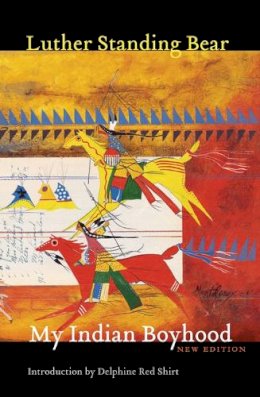
My Indian Boyhood
Luther Standing Bear
Although the traditional Sioux nation was in its last days when Luther Standing Bear was born in the 1860s, he was raised in the ancestral manner to be a successful hunter and warrior and a respectful and productive member of Sioux society. Known as Plenty Kill, young Standing Bear belonged to the Western Sioux tribe that inhabited present-day North and South Dakota. In My Indian Boyhood he describes the home life and education of Indian children. Like other boys, he played with toy bows and arrows in the tipi before learning to make and use them and became schooled in the ways of animals and in the properties of plants and herbs. His life would be very different from that of his ancestors, but he was not denied the excitement of killing his first buffalo before leaving to attend the Carlisle Indian School in Pennsylvania.
Product Details
About Luther Standing Bear
Reviews for My Indian Boyhood
